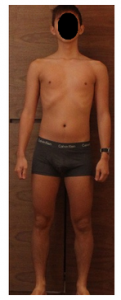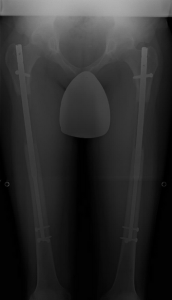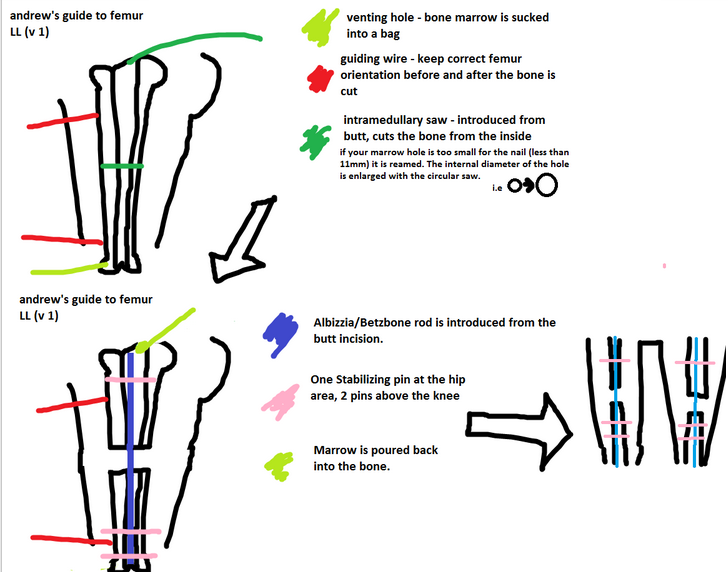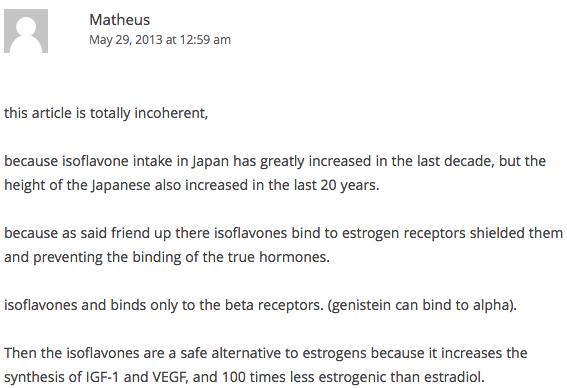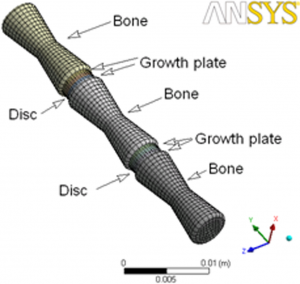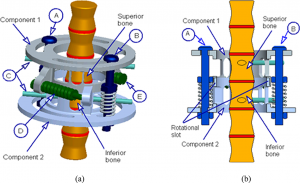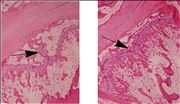How Orthopedic Surgeons Performing Limb Lengthening Surgery Are Making Over 8 Figures A Year In Salary
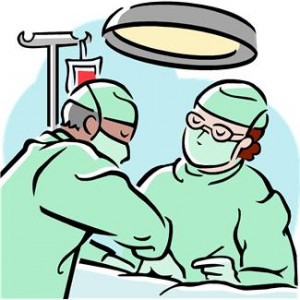 After this recent podcast posting I did with Andrew on his experience with going through with cosmetic surgery to gain almost 4 inches in extra height, I started to become interested in wondering “just how much money do this doctors make on average, annually?”
After this recent podcast posting I did with Andrew on his experience with going through with cosmetic surgery to gain almost 4 inches in extra height, I started to become interested in wondering “just how much money do this doctors make on average, annually?”
I decided to do some “back of the envelope” calculations and if my values are accurate, then orthopedic surgeons who perform the limb lengthening surgery may be the highest paid medical specialty in the world.
About a month ago, I was trying to find information on which medical specialties make the most out of all the medical professions. It turns out that from all the sources I’ve found online, orthopedic surgery is consistently ranked the highest paid specialty. The average values that are usually raised are about $430,000-$450,000/ year in earning for guys who work with the spine specifically. (source 1, source 2, source 3)
There was one resource (here) , which a different value, putting the average earnings much higher, at $710,000/ year.
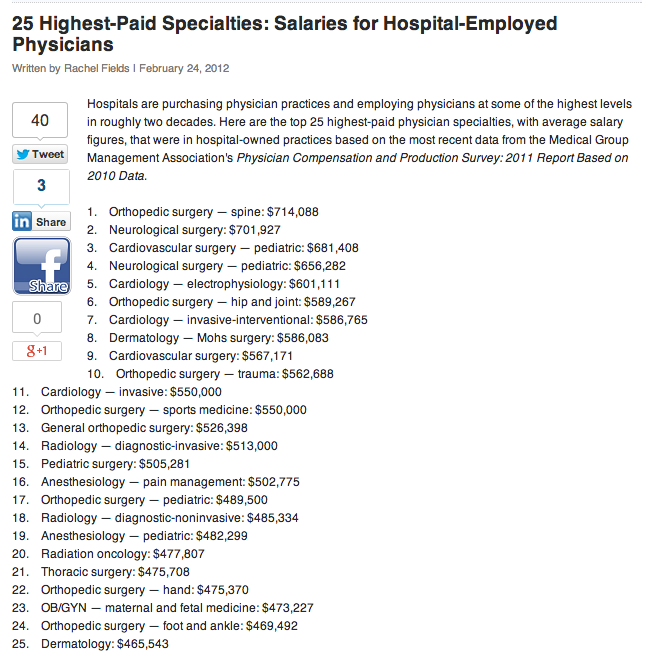
We find that orthopedic surgeons who perform specifically on the spine makes even more than neurological surgeons and cardiovascular surgeons. I guess the old image of brain surgeons and heart surgeons was not as financially beneficial as we are made to believe. They may be within the top 3, but are not at the top. That goes to spine surgeons.
If we are to assume that the average non-spinal orthopedic surgeon (hip & joint) was making about $600,000, then having a ranking of being an excellent surgeons would increase that salary upwards by 30%, making their earnings to be around $1,000,000/year.
Now these guys are reaching the level of earnings only seen in Investment Banking ($1-$3 Mil/year), Senior Partners at Mckinsey ($2-$4 Mil/year), and Senior Partners at Wachtell, Lipton, Rosen & Katz ($4-$8/year). Only Hedge Fund Managers and Major Movie Stars (and directors) have a higher earning potential per year, and those entertainment guys don’t have the same level of stability has guys in consulting & finance. However, there is a few unique breeds of physicians whose earnings rival even the guys in finance, consulting, and law practice. That is what we are talking about here.
I was recently watching the TV Show House MD, in the 2nd season in the episode “The Mistake“, A surgeon that house tries to bribe (and then blackmail) mentions his salary at the hospital. It turns out that even one of the worst surgeons in the hospital who performs liver transplants makes around $600,000 on average. Obviously the show is not based on reality, but the producers and writers of the show try to be accurate on those types of figures when they do their research, especially for a medicine based tv show. So let’s assume that the value the actor playing the doctor speaks of is reasonable, at $600,000. Of course this was back in 2005, so we would have to take into account the 3-5% increase annually of physician salary to keep up with inflation over the years, even accounting for the factor of the major economic depression of 2008-2009. This is the first indicator that the salaries of surgeons in general are very high. So we can already assume that really good physicians at major hospitals are bringing in already almost 7 figures a year. I remember an anecdote about the highest paid physician in Canada, and his/her earnings per year was around $4-5 Mil/Year.
Something that doctors don’t tell their patients is their salaries, but one well known fact is that doctors who do their own private practices, instead of working in hospitals, clinics, and teach make the most money, but only if their private practice is doing very well with a good marketing department. So let’s increase that factor by another 30% for surgeons.
My own dentist back in Bellevue, WA (one of the richest regions of the USA because of Microsoft, Bill Gates and Jeff Bezos who both live in Medina) was making half a million a year herself from good marketing which she paid for years ago after finding a firm to advertise her services. She was the only dentist with a medical staff of half a dozen dental hygienists, which doesn’t include the front desk people who do all the accounts and billing.
Something that most people who never went to Med School know about is this test called Step 1, which is the first version of the USMLE. It is based on the score you get in this one grade which determines which specialties you can apply and/or get into. The cut off point for passing is around 190 currently but to be considered for the best, highest paid specialities you need to have a score of around 240 usually, with the highest almost always being Plastic Surgery in recent years. What happens is that this three digit number is the best indicator of which residency programs that you would be even matched with. Matching is one of the most interesting processes medical school grads will ever half to go through. You fly around the country, or even other countries to interview with perspective residency programs so that you get to interview the programs/clinics/other physicians and they get to interview you. It really is very much like dating, but only there is no chance that you will end up naked in a hotel room at the end of the interview with the other people (unless it went really, REALLY well).
It might be interesting to ask oneself why is it that plastic surgery matching requires such a high step 1 score. (Read Successfully Matching Into Surgical Specialties: An Analysis of National Resident Matching Program Data). At this point, I guess cosmetic surgery is one of the most lucrative specialties with extremely high payoffs. We know that almost all types of cosmetic surgeries requires that the patient completely pay out of their own pocket. I don’t know any medical insurance plans which cover it. The only medical situation where I would guess is if one decides to use the medical excuse of a deviated septum causing sleep apnea to get a rhinoplasty but even that requires that a person use a medical reason first to justify their desire to get it just for cosmetic reasons.
I’ve been living in the Gangnam area of Seoul for almost a year and a half and I know personally very well just how lucrative plastic surgery can be. A 2 Hour surgery can be a total of $50,000 (and upwards) out of pocket. The BK Hospital based in Nonhyeon-Dong in Gangnam-Gu of Seoul is probably is the most famous and has surgical clients fly in from every corner of the world to go there for their excellent service and high quality of surgeons. There is no insurance, no discounts, just you and your bank account.
If we then combine the specialty of orthopedic surgeons and plastic surgery surgeons together, we create the most lucrative medical specialty there probably has ever existed, cosmetic orthopedic surgeons. Cosmetic Orthopedic Surgeons focus mainly on limb lengthening surgery and helping their clients to become taller. That fact is that even in Seoul, Gangnam there is still only maybe a dozen surgeons who are focusing on this micro-niche of surgical speciality.
Andrew has said that the combined total of his surgery with rehabilitation, room and board, etc. was about 70,000-80,000 Euros. That amounts to around $100,000-$110,000 USD. If Andrew wasn’t from Singapore, which is probably the richest country in the world (maybe Monaco is slightly more), then there is probably no way he would have been able to afford this type of surgery.
That was where I started to do actually do my back of the envelope calculations. The average american worker has an hourly rate, and we take that hourly rate and multiply it by a factor of 2000 to figure out how much their yearly income is. If we just took the $50,000 someone like Dr. Betz makes per surgery, and multiple that by 2000, that comes out to $10,000,000 income per year.
If instead we assumed that Dr. Betz himself did all of the real surgery, then he probably can only perform 1-2 surgeries every working day. If we then multiple the cost of each surgery, at $50,000 with the number of surgeries performed each day, at about 1.5, and then multiple that value by the number of days a person in either the USA or Germany works, around 200 days per year, that comes out to be $50,000*1.5*200 = $15 mil / year.
If we consider the fact that the most well known limb lengthening doctors like Paley, Betz, and Ilizarov have their own clinics and medical centers named after them, then it is not that unreasonable to assume that the best cosmetic orthopedic surgeons are bringing in 8 figures a year consistently. Of course that type of income would only come if one chose the right specialty in the beginning and they went into private practice for themselves, and they would need to chose cosmetic surgery since that would mean that there would be less hassle with the medical insurance people. Forget Insurance, Forget HMOs, Forget PPOs. The people who go to these medical also have to sign NDAs and medical legal forms which completely take away the possibility that the patient can fill lawsuits against the doctor if something goes wrong.
Cosmetic Surgery is notorious for the fact that unlike most other medical practices, there is very little blame on the surgeon, so any problems and complications would not affect them. The medical staff require that the patient understands all of the types of complications that they are likely to experience and makes the patient sign off the chance that the limb lengthening clinics would be legally responsible for surgeon/human error in the operating room.
For course I would guess that the medical doctors don’t pocket the full 8 figures. Half of that probably goes to paying their medical staff, the rent on the land for the clinic, the medical equipment, the annual licensing. At the end, His 8 Figure Salary gets reduced to about $3-5 Mil/year. Nice enough to get two summer homes. Dr. Betz may not be a Michael Bloomberg or Rupert Murdoch who can own their own private jets but he would be earning as much as most CEOs of major Fortune 500 Companies, minus the ridiculous stock options and yearly end bonuses. For limb lengthening surgery, the niche is still sort of like the Old Wild West.
So is there any other type of medical speciality that would be comparable to what these guys do?
I thought about the possibilty of transplants, specifically liver, pancreas, heart, bone marrow transplants. On the website National Foundation for Transplants, we find out that the cost of getting these are in the millions.
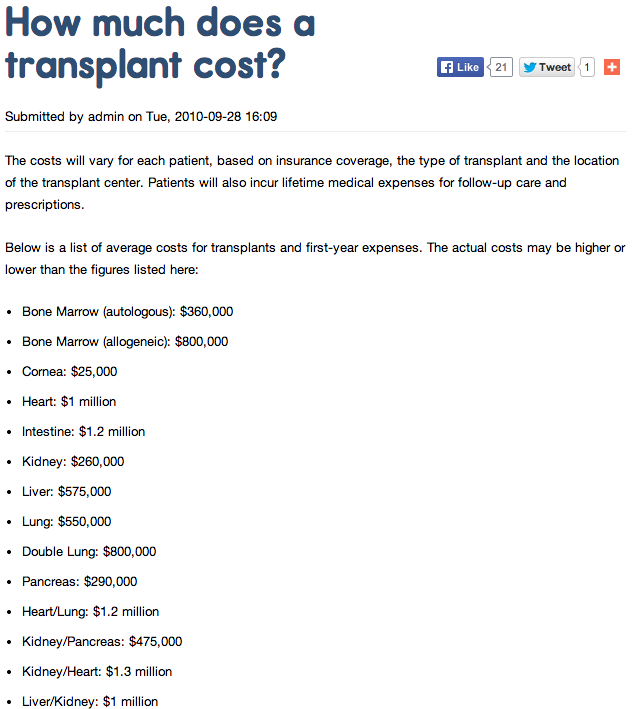
I am reminded on what happened with Steve Jobs during the 2007-2009 time period after he found out that he had pancreatic cancer. He eventually got the Liver transplant. His name probably got bumped up the list because of his superstar status, his name, and his financial resources. For him, a $2 Million Liver Transplant doesn’t mean too much since Job’s Net Worth was around $5 Billion at the time, when the Iphone and Smart Phone market was still growing at a geometric rate.
So would a cardiac surgeon who regularly performs heart transplants make as much as a limb lengthening orthopedic surgeon? I would say no.
I remember volunteering for a professor who was doing research on plastic surgery after my Junior year in my undergraduate degree. I worked with three other research interns, who were both in the Pre-Med route. One of them had already gotten accepted to Duke Medical School and the UVA School of Medicine. The other was already in Medical School. The one already in medical school expressed to me about how he was one of 6 kids to a Gyno/Obstretrician who had his own private practice. His father who had been a OB/GYN for 30 years had over the last couple of decades been squeezed by the medical insurance companies making his practice and his life a living hell.
Now imagine that situation and multiple it by 3X to understand the malpractice insurance hazards of those physicians who perform heart transplants and liver transplants. With a limb lengthening surgery, it takes you about 4-5 hours to perform one. With a Heart transplant, because you are going to have to literally crack open the sternum, and rip open the chest, it would take usually 10-12 hours of surgical time. Add in the fact that you probably have 3 surgeons performing the surgery, 3 anesthesiologists, and a few nurses on call, and the idea of making slightly more than the low 7 figures goes out the door.
As a cardiac or neurological surgeon, you will make 7 figures, but you are restrained by the rules created by the medical insurance companies forcing you to pay for malpractice and liabilities. If you go with cosmetic orthopedic surgery, you can potentially reach in the 8 figures range.





